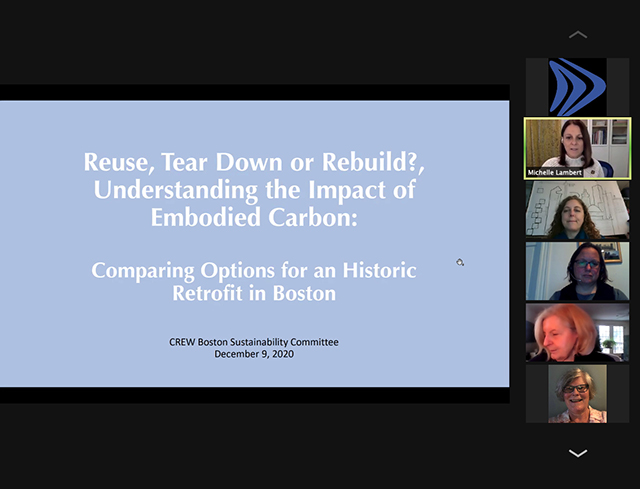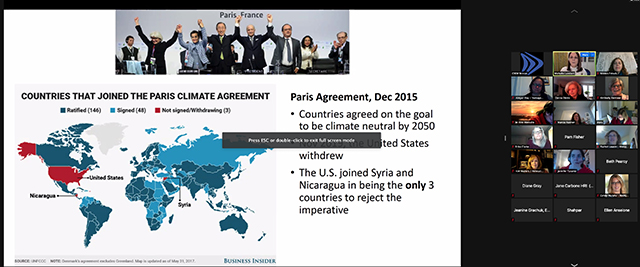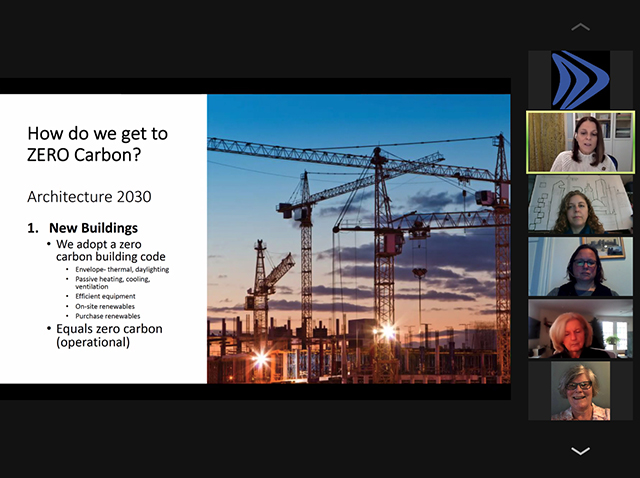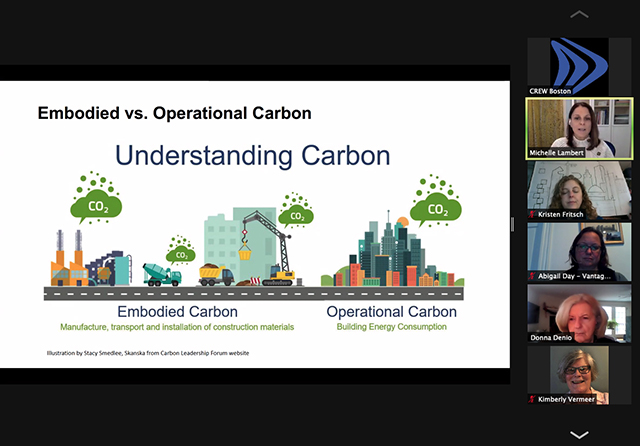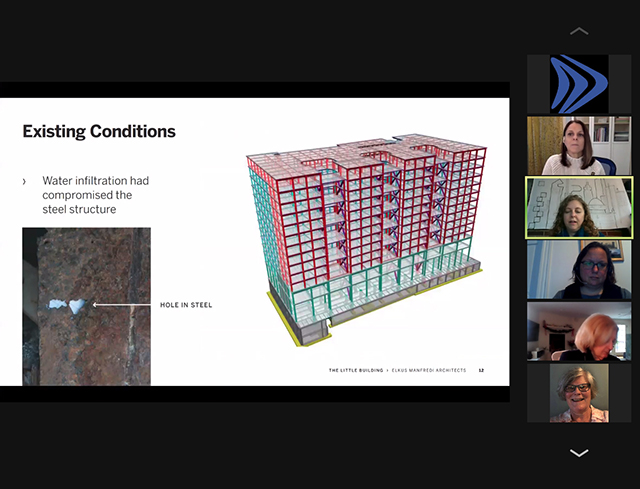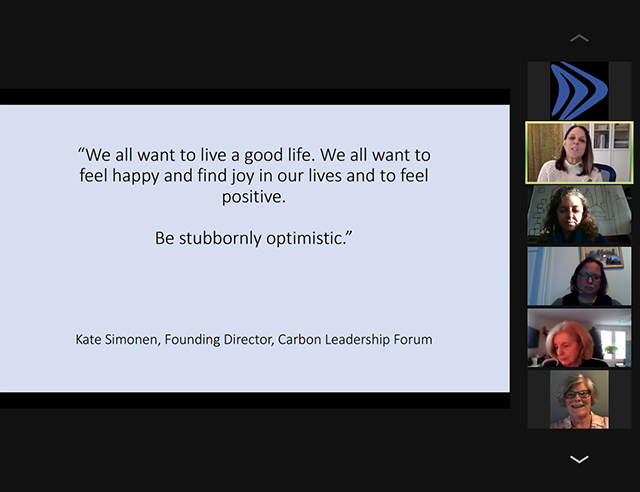Michelle Lambert, a CREW Boston member, and her colleague, Kristen Fritsch, Sustainability Coordinator at Elkus Manfredi Architects, gave us an overview of why measuring embodied carbon is important and how it is calculated. Embodied carbon measures all the energy to produce, transport and build with specific building materials. This hidden source of carbon has a significant impact (estimated to be as much as 11 percent of total global carbon emissions) in addition to the “operational carbon” which is more universally understood and measured. It is important to reduce embodied carbon as much as possible as it is put into the earth’s atmosphere when the building is built and it takes 80-100 years for it to be sequestered. Operational carbon is not added to the environment all at once, but over time as it is used.
Many building products have EPD (Environment Product Declaration) labels that reveal embodied carbon associated with manufacturing. EC3 and ECOM are free web-based tools that help calculate the embodied carbon in building material options and are also supply-chain accountability tools. Two of the biggest sources of embodied carbon are concrete and steel. There are several organizations, including Architecture 2030, Carbon Leadership Forum (
CLF.org) and SE2050 (structural engineering group), pressuring building material options with lower embodied carbon levels. It is also possible to reduce or limit embodied carbon through education, analysis during design and modifications to building codes.
To ground these concepts in a real project application, Michelle and Kristen described a project analysis of the Little Building, owned by Emerson College. The project involved a combination of restoring an existing historic building with some new construction. The embodied carbon of the adaptive reuse, approx. 5000 MT CO
2e (metric tons) was compared with constructing a completely new building of the same SF (8000 MT CO
2e). The analysis demonstrated that 3,000 MT CO
2e. (greenhouse gas emissions) were avoided by reusing the existing structure.
The BSA (Boston Society of Architects) has a
free series to learn more about embodied carbon.
